I'd never heard of Healwell before and took a look over their offerings. Has anyone used the products? Beyond the…
News 6/1/12
Top News

A study finds that physician practices using EMRs did no better (in fact, did a bit worse) in delivering diabetes care. It wasn’t a very large study, it was narrowly focused, it didn’t take into account such important variables as insurance or patient demographics, quality of EMR use wasn’t considered (the survey just asked whether the practice “owned” an EMR), and it used old data (the baseline assessment was from 2004 and the follow-up was in 2006.) I don’t take it to mean much, to be honest, but I’m sure it will be widely (mis)quoted with headlines that don’t reflect the data. The full text article is here.
From Master of Tweets: “Re: Aneesh Chopra tweet chat sponsored by HIMSS and the magazine they publish. He mentioned HIStalk, but their magazine removed that from their transcript.” Above is the former US CTO’s answer when asked what he reads to stay current on health IT trends, That tweet does indeed not appear in the magazine’s transcript (which means it’s not really a transcript since they edited stuff out.) My favorite question he was asked: "Many ‘experts’ in health IT have never used let alone implemented an EHR – how do we get stories of success out?" I’ve learned to tolerate the writing and tweeting of HIT-naïve reporters, academics, etc. when they stick to repackaging the news, but I don’t recognize their credentials to be armchair quarterbacking to CIOs, doctors, government folks, or vendors. You need street cred like Inga when she threw down by fearlessly by asking Farzad Mostashari, “When was the last time you used an EHR?” with both her question and his answer (after his initial shock) raising their respective levels of professional credibility.
From Maxwell Smarts MD: “Re: Cerner. Their silence is deafening giving their central role in the HealthSMART program, now declared a total failure.” The Victoria, Australia government finally puts HealthSMART out of its misery due to the ubiquitous dynamic duo of cost overruns and implementation delays. I’ve been reporting regularly on HealthSMART, launched in 2006 with an estimated cost of $318 million, but now dead after blowing through $557 million with only 40% of the sites live several years after the expected completion date. Millennium was the key component and Cerner struggled to localize it according to critics there, but the government apparently also contributed its expected share of incompetence. Maybe there’s a shining example out there somewhere of government bureaucrats and politicians hunkering down in the mud with big contractors and Wall Street-driven vendors to deliver a successful IT project on time and on budget, but I can’t think of even one.
From Killjoy: “Re: Harris Corporation. Looks like they are purging many of the CareFx positions after their acquisition last year. I heard 40 or so were let go Wednesday.” Unverified.
From Secretive: “Re: Accretive Health. Its SVP apologizes while being grilled by Sen. Al Franken’s committee.” It was a conditional apology – the SVP says that while some patients may have been offended, the company operated within legal and industry guidelines, also pointing out that it fired the employee whose widely quoted e-mail called patients “deadbeats” and “stupid.” More interesting to me was that according to Minnesota Attorney General Lori Swanson, Accretive customer North Memorial Medical Center turned patient information over to Accretive without having a business associate agreement in place, but created one later and back-dated it. That hospital’s data was exposed when a laptop was stolen from an Accretive employee’s car.
From @Cascadia: “Re: NHS. They are shutting down the PHR, but they are clearly emphasizing patient portals according to their just-released Department of Health strategy.” They are indeed. The PHR, in addition to being a big-time flop, wasn’t really necessary to give patients access to their own information. The story of vendor-offered PHRs is pretty much like that of mullets, Zamfir’s pan flute, and the Big Mouth Billy Bass – they’re an unpleasant memory of an unfortunately popular fad that nobody admits to having embraced.
HIStalk Announcements and Requests
On HIStalk Mobile, Dr. Travis posits a great question: why aren’t we hospitals involving inpatients and their families in their care by giving them their own meds lists? They could not only learn by following along with their copy of the MAR, but would also undoubtedly catch a bunch of medication errors. You would think that despite potential embarrassment, hospitals would appreciate being given a chance to avoid making a medication mistake. Why wait until right before discharge to suddenly start dumping information on the patient for take-home use?
HIStalk stats for May: 116,203 visits (the second-busiest month ever, barely behind the HIMSS month of February 2012) and 219,070 page views (beating the all-time record from last month by 20%). Year over year, visits are up 42% and page views are up 98%. Very nice for a month that’s usually the beginning of the summer doldrums. I don’t really follow the numbers, but some readers e-mail me if I don’t mention them. I work the same whether it’s a bunch of readers or not many. Which reminds me as I’m writing this: HIStalk turns nine years old on Sunday, meaning I can’t even remember what it was like having only one full-time job.
I don’t have any reports from the MUSE meeting. Yours is welcome.
On the Jobs Board: Service Delivery Manager, Cerner and Epic Resources. On Healthcare IT Jobs: Programmer Analyst II, Cerner Go-Live Project Manager, Network Engineer II.
It doesn’t take much to make Inga, Dr. Jayne, and me happy. Just your reading HIStalk pretty much does it. If you’re an overachiever, you can (a) sign up for the spam-proof e-mail updates; (b) check out the searchable, browsable sponsor Resource Center; (c) use the Consulting RFI Blaster to painlessly get proposals for your consulting needs; (d) connect with us on LinkedIn, Facebook, Twitter, and all those trendy sites since we approve all requests to join our fairly large network; (e) support our sponsors by perusing their ads and clicking on those that tickle your fancy; and (f) keep the news, rumors, photos, etc. coming since we are not omniscient – we get a lot of help from readers. Of which you are by definition one, and we appreciate that.
Acquisitions, Funding, Business, and Stock
MED3OOO announces its acquisition of St. Louis-based KASS-MSO, an 80-employee provider of medical practice services.
RTLS vendor Versus Technology announces Q2 results: revenue up 89%, net income $198,000 vs. –$405,000.
SAIC reports Q1 numbers: revenue up 4%, EPS $0.35 vs. $0.36. The company said its Vitalize Consulting Solutions acquisition increased revenue, but its Military Health System revenue was down.
Sales
Greater Houston Healthconnect (TX) selects Medicity’s HIE solutions to connect more than 130 hospitals and 14,000 physicians.
Catholic Health East purchases NetSafe business continuance and downtime protection software for its 15 hospitals.
Covenant Health (TN) selects InfoSystems to provide data center virtualization and optimization infrastructure.
NextGate and CSC announce plans to integrate the NextGate Multi-Language Enterprise MPI with several iSOFT applications.
Caverna Memorial Hospital (KY) selects clinical and financial solutions from Healthcare Management Systems.
People
Robin Settle, former leader of PricewaterhouseCoopers’ HIT leadership team, joins Kurt Salmon’s HIT practice.
CORHIO announces that its policy director Liza Fox-Wylie has been selected to become Colorado’s State HIT director.
RCM provider Medical Business Resources appoints Thomas D. Sidebottom (Oracle) its CTO.
N-of-One, a provider of personalized diagnostic and treatment strategies for oncology patients, names Christine Cournoyer , former president and COO of Picis, as CEO.
Vitera Healthcare Solutions appoints Steven Holmquist (MedPlus/Cerner/HBOC) VP of sales.
Apollo Health Street brings on three sales professionals with healthcare IT experience: Andrew Finck, Greg Williams, and Anil Kumar.
Announcements and Implementations
Maine’s HIE announces the pilot of the nation’s first statewide medical imaging archive, which will include data from 56 radiology imaging centers, require about 200TB of storage, and be hosted by Dell.
UPMC deploys AeroScout’s Healthcare Visibility Solutions to automate temperature monitoring at its St. Margaret Hospital and will roll out temperature monitoring and asset tracking across most of its US hospitals.
DPR, a provider of imaging informatics for the radiology industry, will embed M*Modal Fluency Direct technology into its CaseReader structured reporting software solution.
St. Michael’s Hospital in Toronto implements Amcom Software’s Mobile Connect solution to send encrypted messages to staff on their iPhone, iPad, and BlackBerry devices.
Madison Memorial Hospital (ID) goes live on PatientKeeper CPOE and Medication Reconciliation.
Gateway EDI announces that it has signed its 100,000th client and expanded its client base by 19% over the last year.
Government and Politics
Last chance: nominations are due June 11 for open slots on the HIT Policy and Standards Committees.
An article called That CT Scan Costs How Much? in the new Consumer Reports covers wide variation in healthcare charges, even for patients who are careful to use in-network providers. The price of an in-network colonoscopy in one city ranged from $840 at a freestanding practice to $4,481 in a big academic medical center. In another example, a woman with new Cigna insurance was treated in the ED for back pain and the hospital told her she owned $6,500 of the $14,600 bill that included a $9,000 CT scan. The hospital told her they’d take $3,000 cash if she paid immediately, which she did, only to find afterward that other Cigna providers offered CT scans for $318. Other stories: a woman with high-deductible insurance couldn’t find any lab that could tell her what her two routine tests would cost; a patient went to an out-of-network neurosurgeon for a risky procedure and was charged $592,000 by the surgeon vs. the $112,000 the insurance company would pay as usual and customary; and a woman who carefully chose an in-network surgeon still got stuck with a $10,000 bill from the hospital’s out-of-network anesthesiologist.
Feather River Hospital (CA) will shut down its 12-employee medical transcription department and outsource the work, saying the government’s push for EMR usage will reduce its need for transcription services. Said one of the transcriptionists, “I think they are going to find that they still need us. I don’t think computers are going to cut it.” That’s what stenographers said.
The 3,700-physician Hill Physicians Medical Group (CA) posts its financial results publicly: $481 million in revenue and $11.6 million in profit, even after spending $7 million last year on an EMR. The full report mentions specific applications they use: RelayHealth, Ascender, and NextGen.
A specimen control clerk at Mount Sinai Hospital (FL) is arrested on identity theft charges after police found credit cards and hospital computer printouts that were later traced back to her.
National Coordinator Farzad Mostashari will deliver the opening keynote for the 2nd International Summit on the Future of Health Privacy, held in Washington DC June 6-7. Registration is free to either attend in person or to view via streaming Webcast. The agenda is here.
An Abu Dhabi publication profiles Cerner nurse executive Deirdre Stewart and the state of healthcare IT in the Middle East. It says UAE spending on healthcare IT will rise from $3.1 billion to $4.7 billion this year, with quality (“the latest technology from reputed companies”) rather than price driving product selection.
The government of South Australia provides $186 million to fund three health IT projects: a patient administration system, a pathology information system, and a medical image storage system.
Weird News Andy predicts that June 21 will be a long day for patients in the UK. Unionized doctors there vote to go on strike for a day for the first time since 1975. The docs are mad about government plans to push back their retirement age from 60 to 62 and to make them contribute more towards their pensions. In the example given, a doctor making $185K today could retire at 60 with an annual pension of $74K, with one Member of Parliament (who’s also a doctor) saying, “The public will simply not understand why doctors have called for strike action over pensions that private sector workers and many other frontline NHS workers can only dream of.”
A money-losing hospital in Canada that installed a Tim Horton’s coffee shop expecting to make the same $300K annual profit that similar outlets rake in instead finds itself losing $260K per year. The CEO of the health authority explains: “We charge you a buck-ninety-four for that large coffee, but we insist that the staff who are pouring the coffee are Eastern Health staff, and they get paid $28 an hour.” The health authority says it will turn the location over to a private operator that isn’t saddled with its generous compensation practices.
Sponsor Updates
- Memorial Medical Center of West Michigan selects Wolters Kluwer Health’s ProVation Order Sets as its electronic order sets solution.
- Frost & Sullivan awards Imprivata its 2012 North American Customer Value Enhancement Award for accelerating EMR adoption with its single sign-on solution.
- Hayes Management Consulting announces that its MDaudit software provides an E&M bell curve reporting module to help organizations identify providers who are consistently coding higher than their peers.
- A local newspaper interviews Kareo sales director Jason McDonald, who shares how his experience as a Marine has transferred to his civilian career.
- The Advisory Board Company posts a case study that details how St. Joseph’s Hospital (TX) launched a four-hospital clinical integration network in just six months.
- Premier Bone & Joint Centers (WY) selects SRS EHR for its 12 locations and 10 physicians.
- CTG Health Solutions hosts a Webinar on healthcare security issues.
- Health and Social Care Northern Ireland selects Orion Health to provide a clinical portal-based Electronic Care Record.
- Sentara Healthcare discusses how Capsule Tech’s DataCaptor solution helped it connect more than 1,800 medical devices from over 1,000 patient beds.
- Healthmark Regional Medical Center (FL), Millford Memorial Hospital (UT), Beaver Valley Hospital (UT), and Kit Carson Memorial Hospital (CO) select Prognosis HIS Enterprise Clinical and Financial systems.
EPtalk by Dr. Jayne
NCQA offers a seminar on Improving Organizational Performance to be held July 11 in Washington, DC. Speakers will discuss overcoming obstacles and barriers as well as implementing effective quality interventions. ONC will be providing faculty support as well. The fee is a bit steep, though – $795 unless you register prior to June 13 for the early bird discount.
George Washington University’s Hirsh Health Law and Policy Program has launched Health Information & the Law as a guide to federal and state laws on the access, use, release, and publication of health information. Information is grouped by topic and an analysis section also features articles and issues briefs by GW authors.
A colleague from residency recently introduced me to Quackwatch, which describes itself as “your guide to quackery, health fraud, and intelligent decisions,” which got my attention. Although some of the articles are older, there were many interesting reads. The kinds of scams described never go out of style, unfortunately.
If you build it they will come. Or not. A recent report shows that less than a third of eligible physicians reported quality data to CMS for 2010. Although 125,000 physicians received a bonus, 50,000 attempted and failed. Physicians who don’t report in 2013 will be assessed a noncompliance penalty starting in 2015, although it’s relatively small at 1.5%. I don’t blame paper-based physicians who have small Medicare panels for concluding that reporting may be more trouble than it is worth. On the other side, for most providers with reasonable EHR technology, you’re just throwing away money if you’re not reporting.
CMS will host a National Provider call on June 7 for Eligible Professionals to learn about registration and attestation for the Medicare/Medicaid incentive programs. There are quite a few providers out there who still have only minimal knowledge of the programs. Since this is the last year that providers can start and still earn the full incentive, it’s a good starting point for providers who need to catch up. If you’re a provider who didn’t report, why not? Do you plan to report in 2013?
A thoughtful reader sent an article to Mr. H “for Inga and Dr. Jayne on their never-ending quest.” It was a review of Rachelle Bergstein’s book, Women From the Ankle Down: The Story of Shoes and How They Define Us. It’s been added to my Amazon wish list (ahem, to certain men in my life who may be shopping for a soon-to-be arriving birthday) and I’ll be sure to read it prior to the next HIStalkapalooza so I can provide more informed commentary on the shoe competition. In the mean time, I learned a great factoid from the review: Salvatore Ferragamo invented the cork-soled wedge after taking human anatomy classes at USC. Who would have guessed?
Contacts
Mr. H, Inga, Dr. Jayne, Dr. Gregg.
More news: HIStalk Practice, HIStalk Mobile.



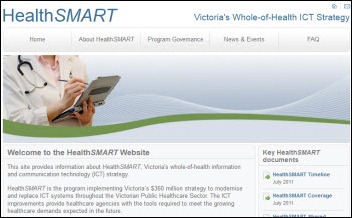
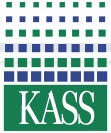

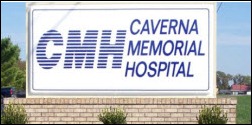





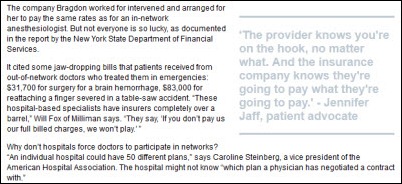


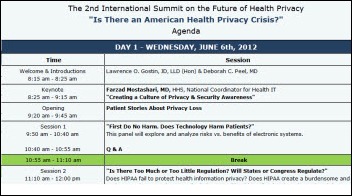
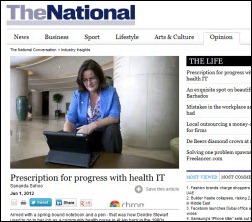






Mr H. You missed the best trick about the Aneesh Chopra chat. The HIMSS press release announcing it described HIMSS as a “cause based non-profit” which I believe is a new marketing spiel from them. (see the home page)
http://www.himss.org/asp/abouthimsshome.asp
Who better than you to explain what caused HIMSS is based on?
HAPPY BIRTHDAY, HISTALK!!! Thanks to Mr and Mrs H for everything you do!!!
The results of the diabetes study is of no surprise to those who are using EMRs. When the lawsuits come in fronm overdoses and other forms of neglect so associated, doctors will recognize the mistake they made.
As for the Chopra report, yes, Inga asked a bold question then of Farzad M, but as I read back through the interview, he did not answer the question, actually.
He ought to be faced with attending responsibilities and time constraints for professional responsibilites and the requirement to enter all orders by CPOE.
Let’s be honest Farzad!
Re: “Maybe there’s a shining example out there somewhere of government bureaucrats and politicians hunkering down in the mud with big contractors and Wall Street-driven vendors to deliver a successful IT project on time and on budget, but I can’t think of even one.”
It’s too bad (legal) betting parlors don’t take bets on those type of projects.
See “Pessimism, Computer Failure, and Information Systems Development in the Public Sector.” Public Administration Review 67;5:917-929, Sept/Oct. 2007, Shaun Goldfinch, University of Otago, New Zealand. link
CMS is hosting a telephone conference on attestation, yet, it has not responded to thousands of opt out requests pejrtaining to e-prescribing. Mr. Histalk, do you or does anyone know the status of the opt out process?
RE: Quackwatch
Reader beware! Yes this site does make for tantalizing reading but I lost my respect and all trust for this site because of the listing of Linus Pauling among other noted world scientist since 1990s. I did not see Dr. Pauling’s name listed recently, it must be the HONcode certification made Barrett clean up his puke. HIStalk nation, don’t be so credulous in your search for information. Julian Assange, Yes – Stephen Barrett, No. I would rather kiss Joseph McCarthy on the lips and Al Gore, inventor of the Internet deserved a Nobel Prize.
Re: diabetes care study. Studies that group practices by yes/no “do you have an EMR” without further breakdowns by the EMR’s appropriateness to the patient population and the success of the EMR implementation/use are utterly worthless. There has to be some measure of whether the EMR has the needed features (in this case, diabetes-tracking features, does it work with key care workflows) and whether it is being used successfully (is it user-friendly, how is adoption, how much training, etc).
An analogous drug study would be tracking patients diabetes outcomes, and grouping the patients by yes/no “is the patient taking any drugs” without specifying the drug. If I include patients who take a daily aspirin but do not use insulin to control their blood sugar in the “Yes, receiving treatment” category then I would get results similarly disappointing results. I would not, however, be justified in saying “drugs don’t help diabetic patients” because my definition of “drug” rendered my data meaningless.
It’s tough to clearly identify yes/no whether an EMR implementation is “successful,” because “we are documenting in it” is not enough. But there are ways – identifying needed features, measuring workflow impact, looking at ease of accessing needed data, looking at whether the needed data is tracked successfully in the EMR. But measuring these things is inconvenient for researchers who just want to push out numbers, even if those numbers don’t mean anything.
The lack of a “successful use factor” to differentiate EMRs and EMR users would explain why Kaiser reports improvements in some care measures due to HealthConnect (Epic), yet those results aren’t seen in studies that simply ask “are you using an EMR.” KP isn’t lying when they report improvements, their EMR use has a model for successful use and is therefore different from the “just using an EMR in some way” group.